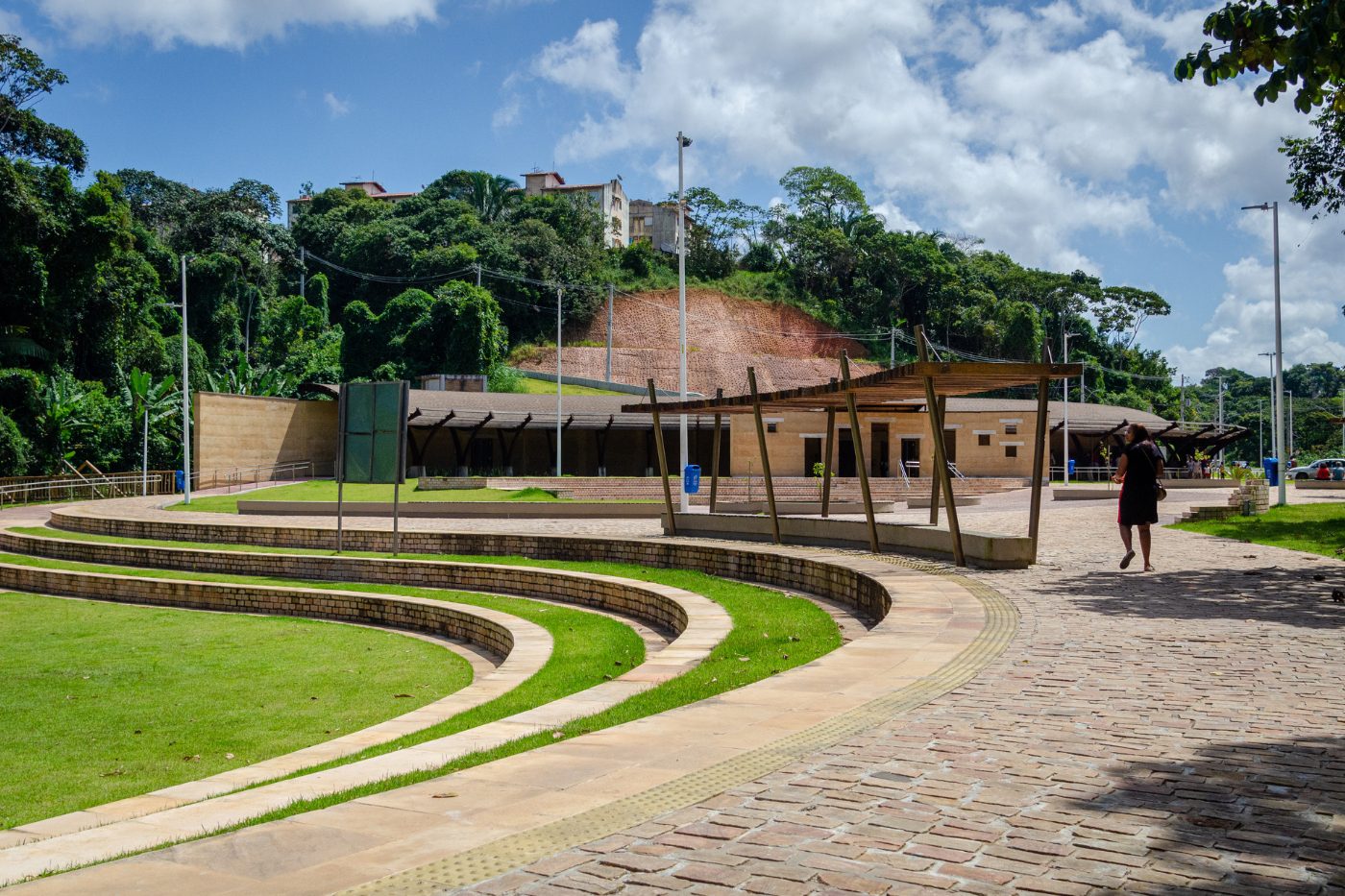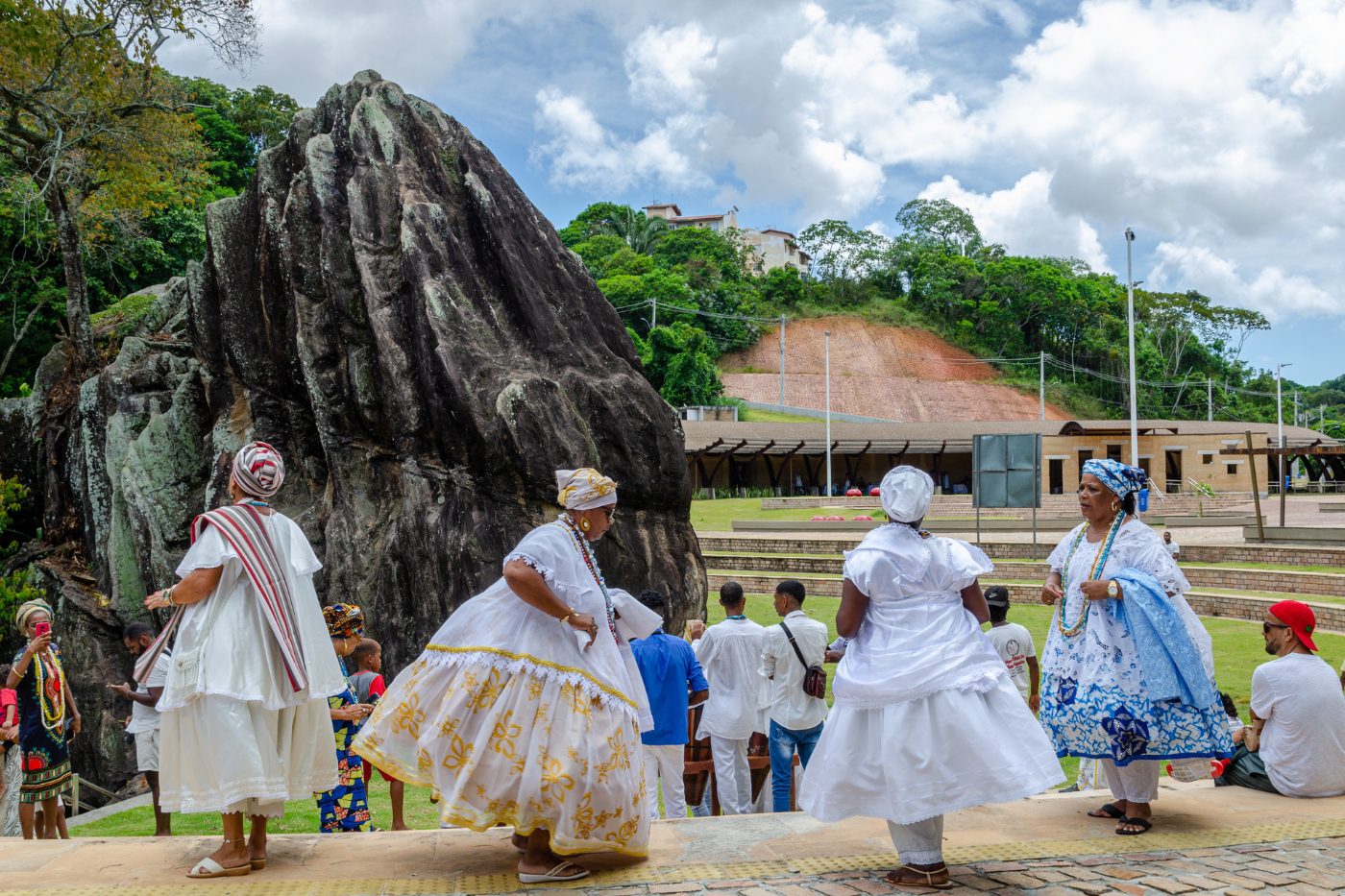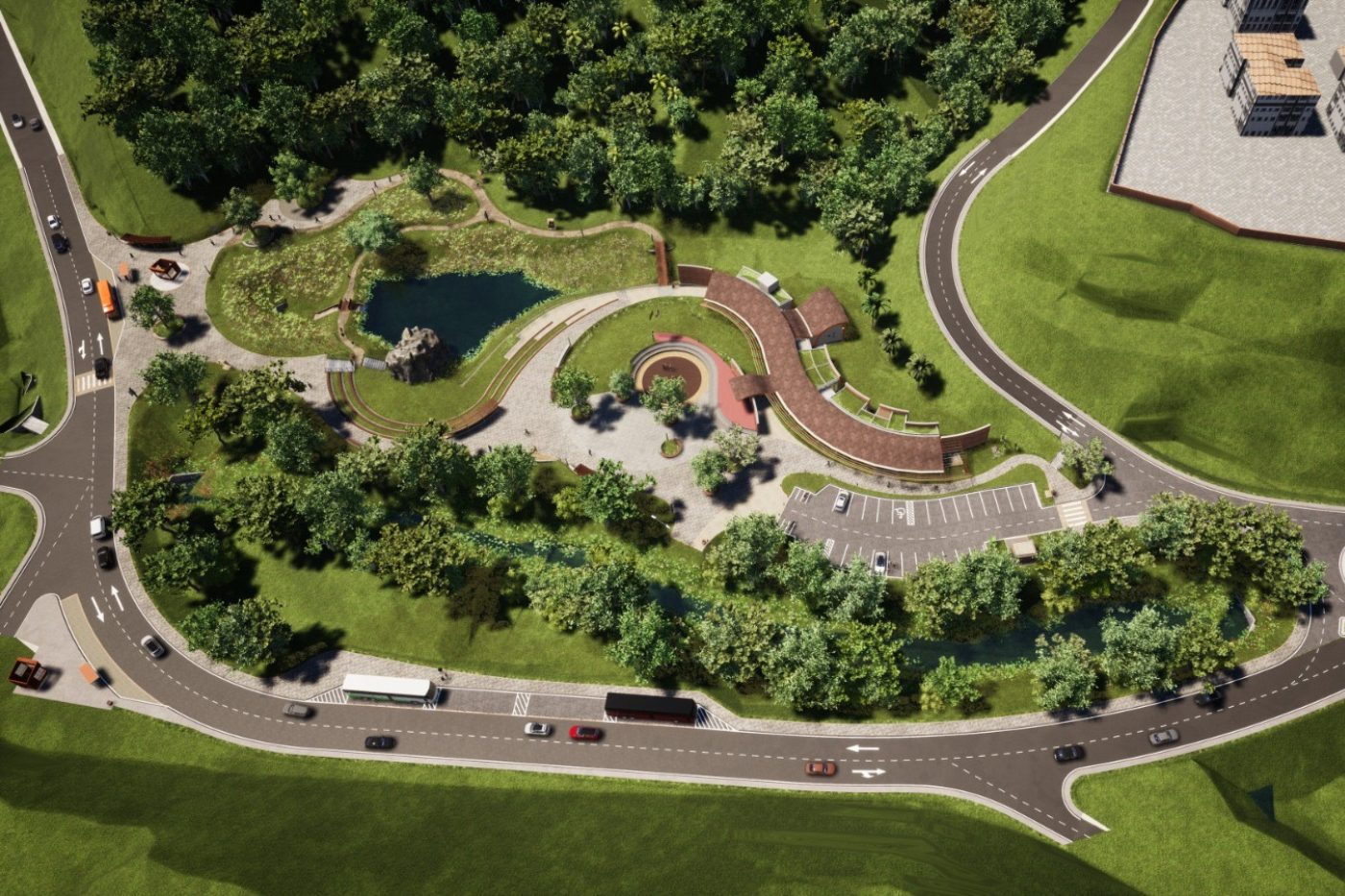Project implementation: Brazil
Project development: Brazil
Xangô Stone, a rock formation 27 m in diameter and 15 m high located on the outskirts of Salvador, Bahia, Brazil, has a strong mythical and historical character. According to oral histories, enslaved Black people, fleeing, would pass through its crevice and disappear. A symbol of resistance recognized as the "Altar of Xangô," the stone is a sacred monument for African-based religions and was declared a national heritage site by the municipality in 2017 following a social mobilization. Located in an environmentally protected area, it constitutes a central element of the Assis Valente Environmental Protection Area (APA) and led to the creation of the Xangô Stone Park, covering 4.46 hectares, the first in Brazil to be named after an Orisha.
Designed in 2018 by FFA Arquitetura e Urbanismo for the Mário Leal Ferreira Foundation (Salvador City Hall), through a participatory process involving public agencies, communities, and surrounding religious temples, the project reaffirms the cultural and religious symbolism of the site, integrating nature and built space. Among the identified threats were the impact of Assis Valente Avenue and the pressure of occupation on the forest. In response, a road detour was proposed, creating a buffer zone and a retention basin associated with local legends, as well as an environmental monitoring route to protect the vegetation.
The urban design was structured in three layers: experience (paths and spaces for the convergence of Afro-Brazilian culture), memory (support for Afro-Brazilian memory, integrating stone, water, and vegetation), and intimacy (narrow forest trails for more secluded experiences). The program included a support building with an auditorium, a space for a memorial for Candomblé nations, and administrative and maintenance spaces, articulated by a rammed earth wall that revives traditional techniques.
The implementation respected the topography, occupying a previously deforested area, and fostered a symbiosis between the building and the natural environment. The building features a landscaped green roof, cross-ventilation, and rainwater and solar energy harvesting. The materials used—stabilized earth, ecological brick, wood, natural stone, and Corten steel—ensure low environmental impact and high thermoacoustic performance. The landscaping highlighted sacred species, reinforcing the integration with nature and the religious character of the park.
The project's implementation, particularly due to the adoption of bioconstruction techniques in a public project, required the support of the management and technical teams of the Mário Leal Ferreira Foundation and specialized academic consultancy. The intense participation of African-Brazilian communities ensured the expression of the symbolism of stone, raw earth, and vegetation as a primordial framework. Inaugurated in May 2022, Pedra de Xangô Park thus represents an emblematic space of cultural resistance and environmental integration, contributing to the fight against climate change and strengthening Afro-Brazilian identity in Salvador.




